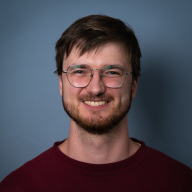
Ryan Kidd
Bio
Participation5
Co-Director at SERI MATS (2022-current)
Ph.D. in Physics from the University of Queensland (2022)
Group organizer at Effective Altruism UQ (2017-2021)
Posts 8
Comments18
- We broadened our advertising approach for the Summer 2023 Cohort, including a Twitter post and a shout-out on Rob Miles' YouTube and TikTok channels. We expected some lowering of average applicant quality as a result but have yet to see a massive influx of applicants from these sources. We additionally focused more on targeted advertising to AI safety student groups, given their recent growth. We will publish updated applicant statistics after our applications close.
- In addition to applicant selection and curriculum elements, our Scholar Support staff, introduced in the Winter 2022-23 Cohort, supplement the mentorship experience by providing 1-1 research strategy and unblocking support for scholars. This program feature aims to:
- Supplement and augment mentorship with 1-1 debugging, planning, and unblocking;
- Allow air-gapping of evaluation and support, improving scholar outcomes by resolving issues they would not take to their mentor;
- Solve scholars’ problems, giving more time for research.
- Defining "good alignment research" is very complicated and merits a post of its own (or two, if you also include the theories of change that MATS endorses). We are currently developing scholar research ability through curriculum elements focused on breadth, depth, and epistemology (the "T-model of research"):
- Breadth-first search (literature reviews, building a "toolbox" of knowledge, noticing gaps);
- Depth-first search (forming testable hypotheses, project-specific skills, executing research, recursing appropriately, using checkpoints);
- Epistemology (identifying threat models, backchaining to local search, applying builder/breaker methodology, babble and prune, "infinite-compute/time" style problem decompositions, etc.).
- Our Alumni Spotlight includes an incomplete list of projects we highlight. Many more past scholar projects seem promising to us but have yet to meet our criteria for inclusion here. Watch this space.
- Since Summer 2022, MATS has explicitly been trying to parallelize the field of AI safety as much as is prudent, given the available mentorship and scholarly talent. In longer-timeline worlds, more careful serial research seems prudent, as growing the field rapidly is a risk for the reasons outlined in the above article. We believe that MATS' goals have grown more important from the perspective of timelines shortening (though MATS management has not updated on timelines much as they were already fairly short in our estimation).
- MATS would love to support senior research talent interested in transitioning into AI safety! Our scholars generally comprise 10% Postdocs, and we would like this number to rise. Currently, our advertising strategy is contingent on the AI safety community adequately targeting these populations (which seems false) and might change for future cohorts.
I'm not advocating a stock HR department with my comment. I used "HR" as a shorthand for "community health agent who is focused on support over evaluation." This is why I didn't refer to HR departments in my post. Corporate HR seems flawed in obvious ways, though I think it's probably usually better than nothing, at least for tail risks.
Yeah, I think that EA is far better at encouraging and supporting disclosure to evaluators than, for example, private industry. I also think EAs are more likely to genuinely report their failures (and I take pride in doing this myself, to the extent I'm able). However, I feel that there is still room for more support in the EA community that is decoupled from evaluation, for individuals that might benefit from this.

Thanks Joseph! Adding to this, our ideal applicant has:
MATS alumni have gone on to publish safety research (LW posts here), join alignment research teams (including at Anthropic and MIRI), and found alignment research organizations (including a MIRI team, Leap Labs, and Apollo Research). Our alumni spotlight is here.